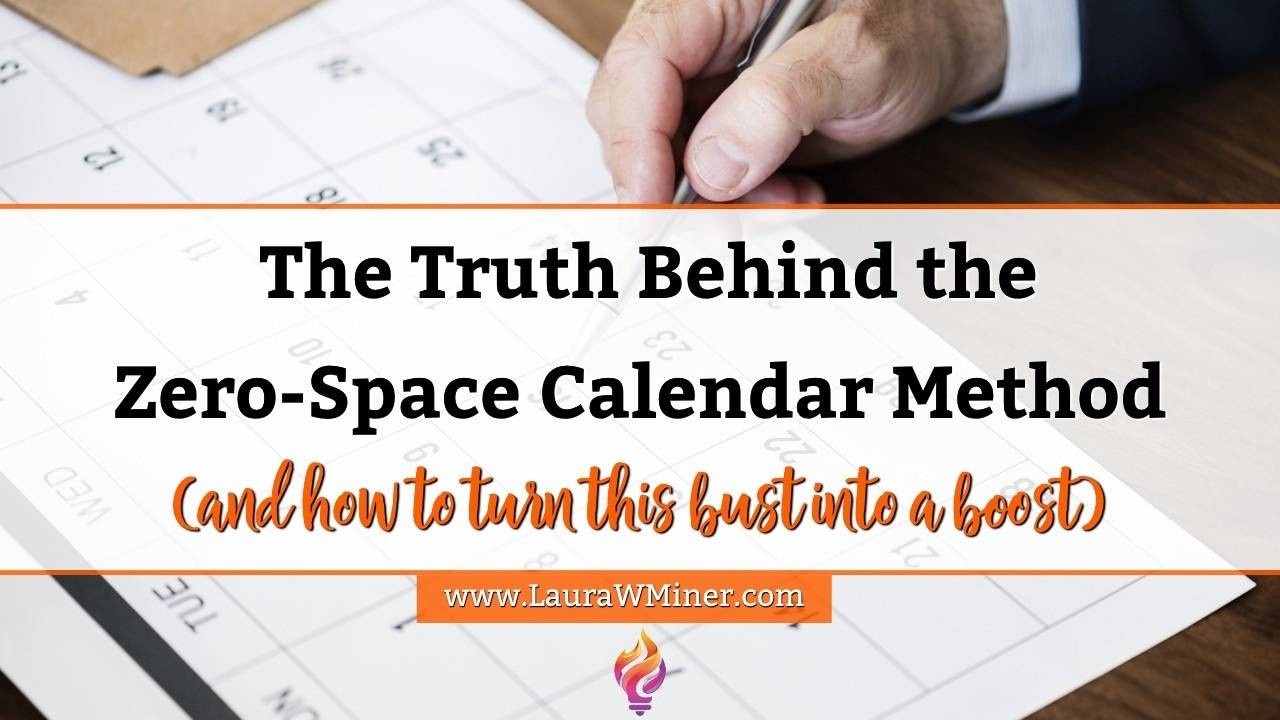
Recently, there's been a slew of articles and videos popping up about the Zero-Space Calendar method. If you’re unfamiliar, it’s an approach to planning that says you should schedule every minute of your day with no gaps in between.
Now, in fairness, this includes time for lunch, commute hours, personal grooming, etc. But what the methodology claims is that by leaving no gaps in your schedule you will become more productive.
While this may sound great on the surface, the science, research, and data simply don't support it.
In fact, this approach has actually be shown to sabotage productivity and goal-setting efforts more than it helps them. And here’s why...
The Planning Fallacy Gets Us
We, as humans, are prone to an optimism bias known as the planning fallacy. The planning fallacy is the phenomenon where we consistently underestimate the time which will be needed to complete a particular task. And what winds up happening is that we have an overly-optimistic view that we can finish something far quicker than is reasonable, or sometimes even possible.
Let me give you an example…
Imagine for a moment that you’ve got a zero-space calendar and that you’ve slotted time in your calendar from 10:00 am - 11:30 am to put together an important proposal for a client you’re meeting with the next day.
However, as you start to work on it, your phone rings and it’s a call you can’t ignore. Then, as you start to get back to it, someone walks into your office, taking up another few minutes of your time. Finally, as you're getting into the meat of your proposal, you realize the numbers don’t add up and you have to rework the proposal.
And all of a sudden it’s 11:30 am and your notifications are sounding because it’s time to leave for a lunch appointment that’s scheduled for noon. But you haven't completed your task yet, and your schedule is jam-packed for the rest of the day because you follow the zero-space calendar methodology.
Are you feeling as stressed as me? If so, this is a natural reaction.
As the research has shown, when buffers are not intentionally built into our planning system, it creates stress and anxiety while eroding productivity. Cortisol is then released in our bodies as a result of the stress, and rational decision making is negatively impacted.
In addition, research has shown that the brain cannot differentiate between physical and psychological pain; the body responds the exact same way to both - so the stress hormones released and the physiological responses are the same. Additionally, our brain processes these failures as ego threats, which then leads to depleted levels of self-regulation.
So while a zero-space calendar may sound great on the surface, it can actually be a means of setting ourselves up for failure and inviting stress into our day.
Using The Planning Fallacy To Your Advantage
Interestingly though, the research has also shown that the planning fallacy - where we underestimate the time needed to complete a task - only rears its ugly head when planning for our own tasks. However, when we’re estimating the task completion time for someone else’s task, we take a pessimistic view and over-estimate the time they'll need... even if they’re completing the exact same task as us!
So if you’re trying to get a better handle on your time estimates, get an accountability partner and then review each other’s weekly plans in advance.
Often times our optimism bias will leap from the page and grab someone ELSE'S attention, even though we ourselves didn’t see it.
How To Adjust The Zero-Space Method to Work For You
Now, the science is clear, but that doesn’t mean you can’t keep a zero-space calendar if you want to. But here’s the trick…
Intentionally include “buffer” spaces in your calendar that have no task attached. That way, when interruptions occur and put you behind schedule, or the planning fallacy creeps in and doubles the length of time needed to complete a task, you have the space in your day to recover stress-free.
This simple adjustment can move the zero-space calendar methodology from being a productivity BUSTER to a massive BOOSTER!
If you found this article helpful and would like to fuel your success with more science-backed insights, then click here to get access to a free, 10-part video course packed full of tips, tools, and science-backed insights to help you develop an achiever’s mindset.
Get the Practionable Leadership Newsletter
Practical, actionable insights to help you level up your leadership and life!



